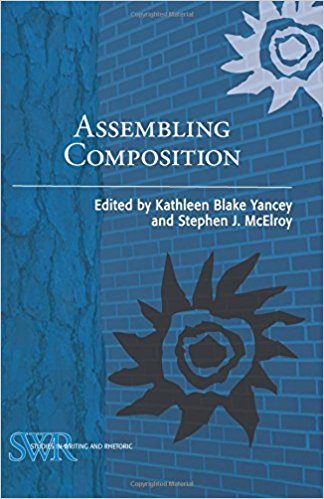Assembling Composition

Find This Publication Online
Drawing on historical studies as well as on current innovations of composing, Assembling Composition provides a new framework for understanding composing. As Kathleen Blake Yancey, Stephen J. McElroy, and their contributors detail, assemblage theory explains disparate composing practices--from postcard production in the early twentieth century to database-informed composing in the twenty-first, from museum-inspired collecting to creative repetitions of authentic Native American practices. And as a key concept, assemblage has been field tested in several settings, including first-year composition, upper-level writing courses, and graduate courses.
Assembling Composition speaks particularly to four dimensions of assemblage: (1) ways that assemblage helps us theorize current digital and material composing practices; (2) ways that employing assemblage as a key term and practice in the teaching of writing can assist both teachers and students; (3) ways that assemblage has historically contributed to everyday composing; and (4) ways that we can interrogate assemblage as an ethical practice. Collectively, these chapters complicate and enrich our understandings of composing, our sense of what constitutes a text, and our expectation of the potential effects of texts.

